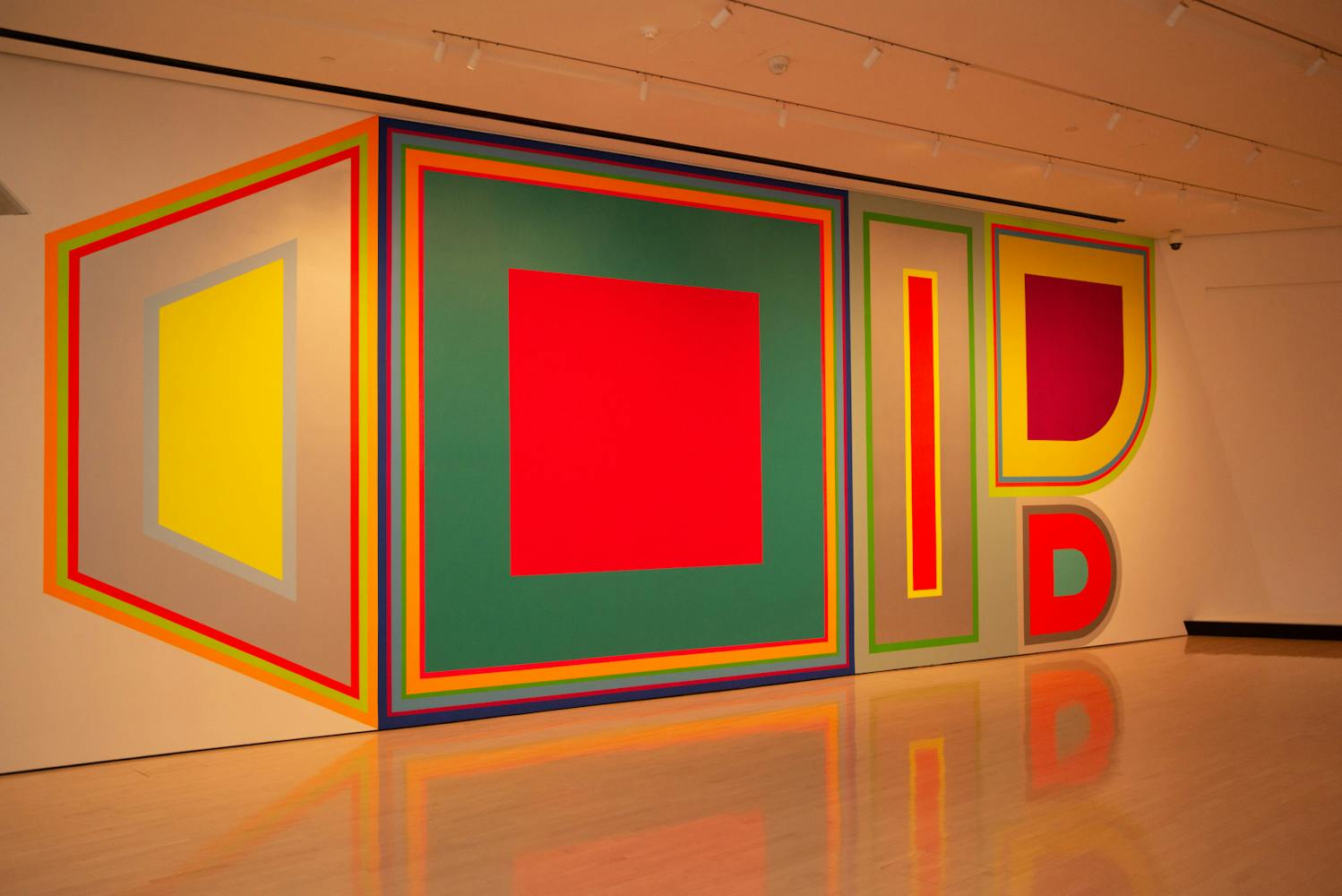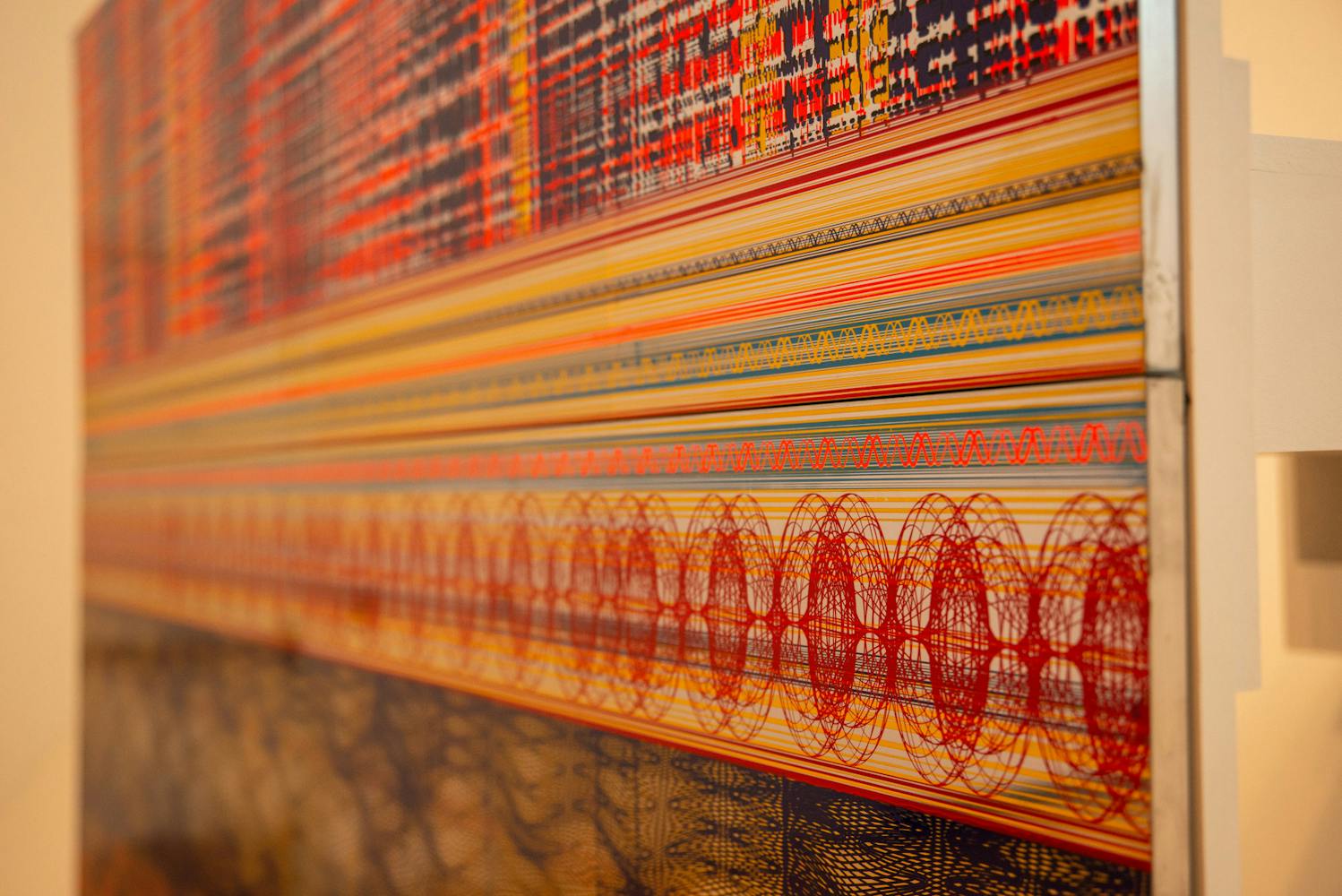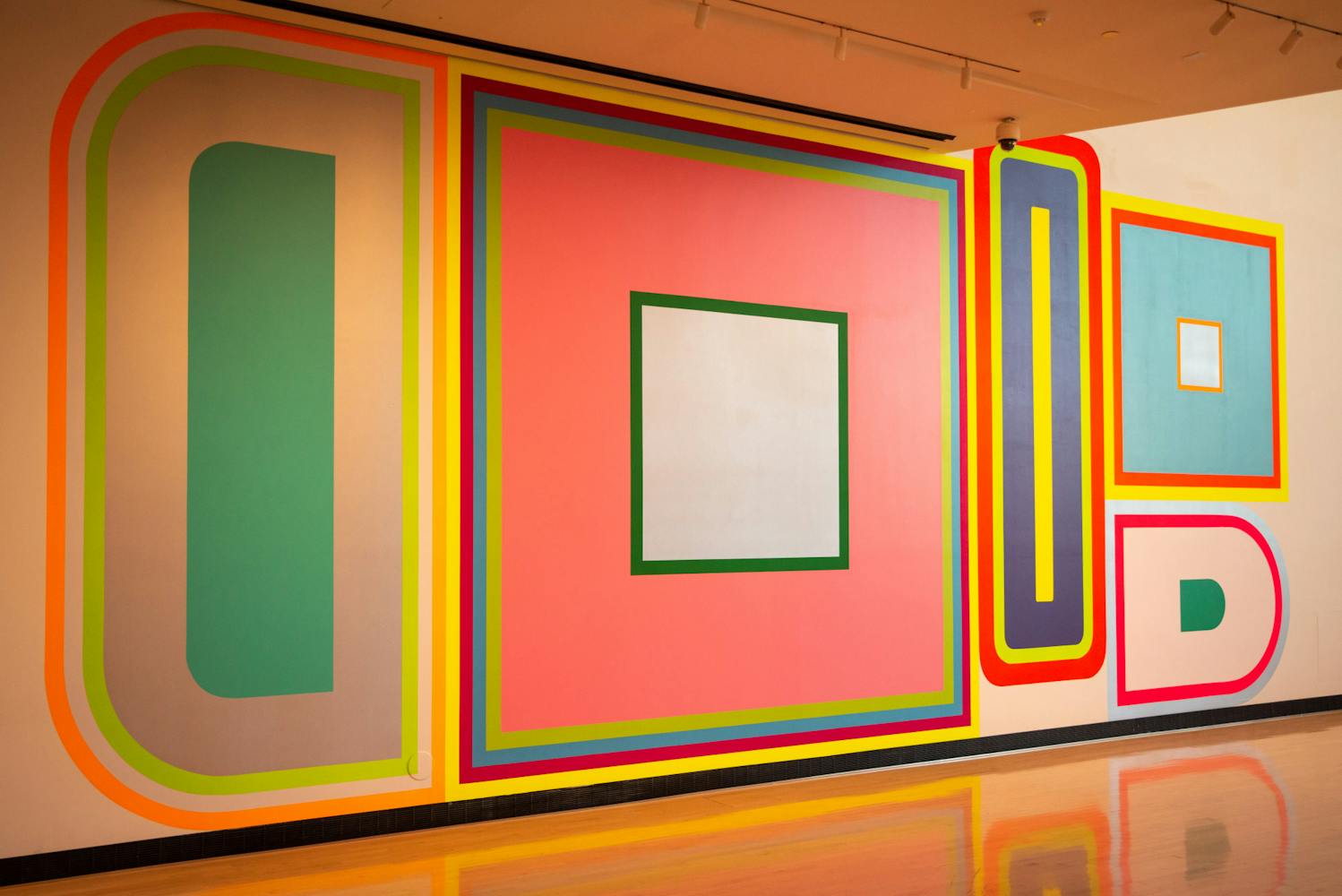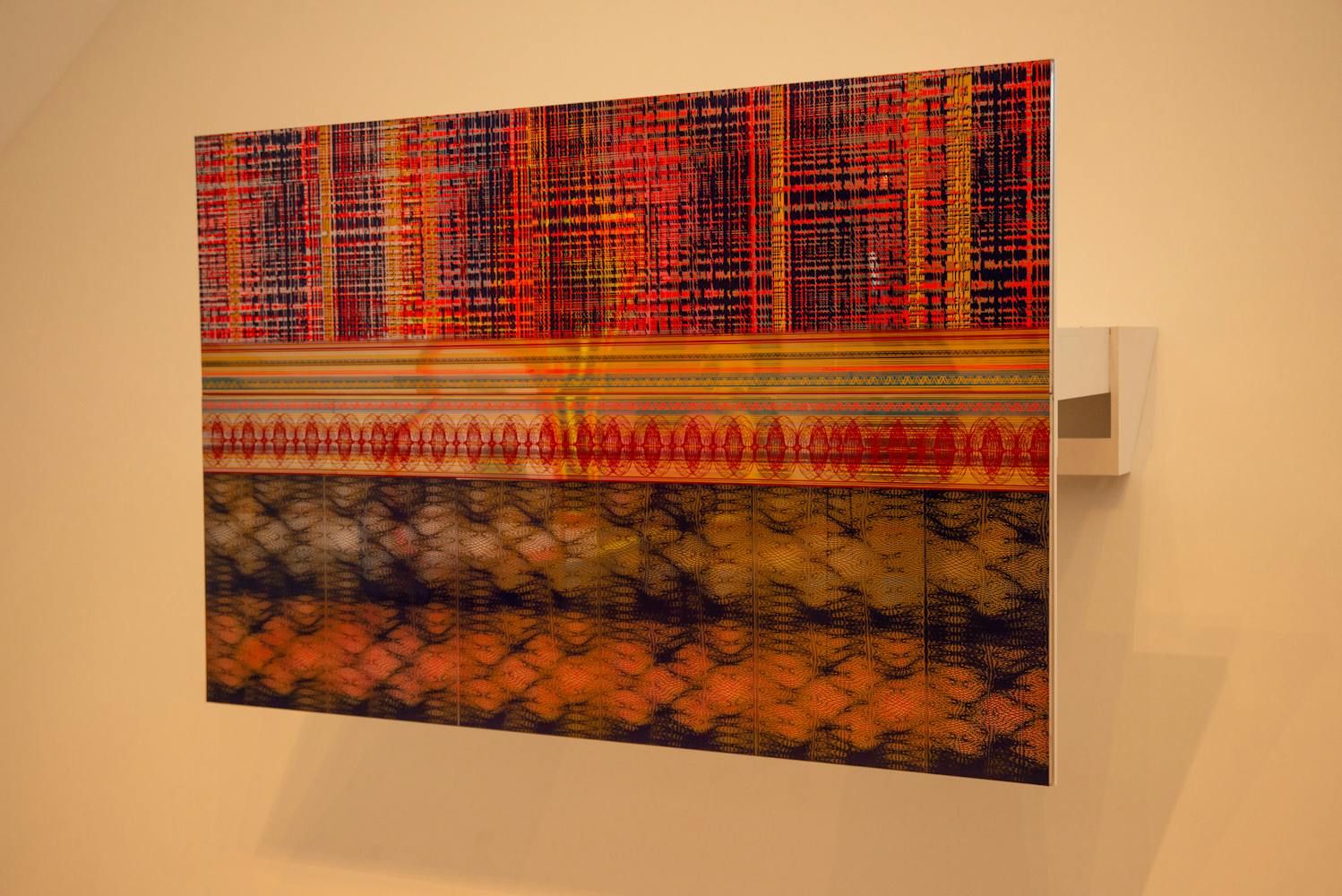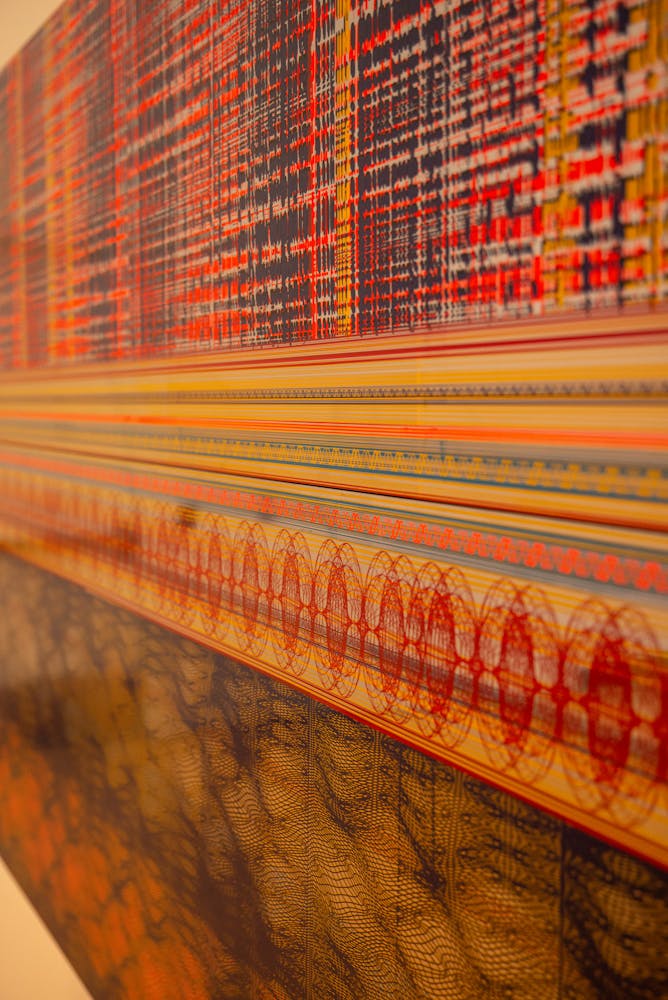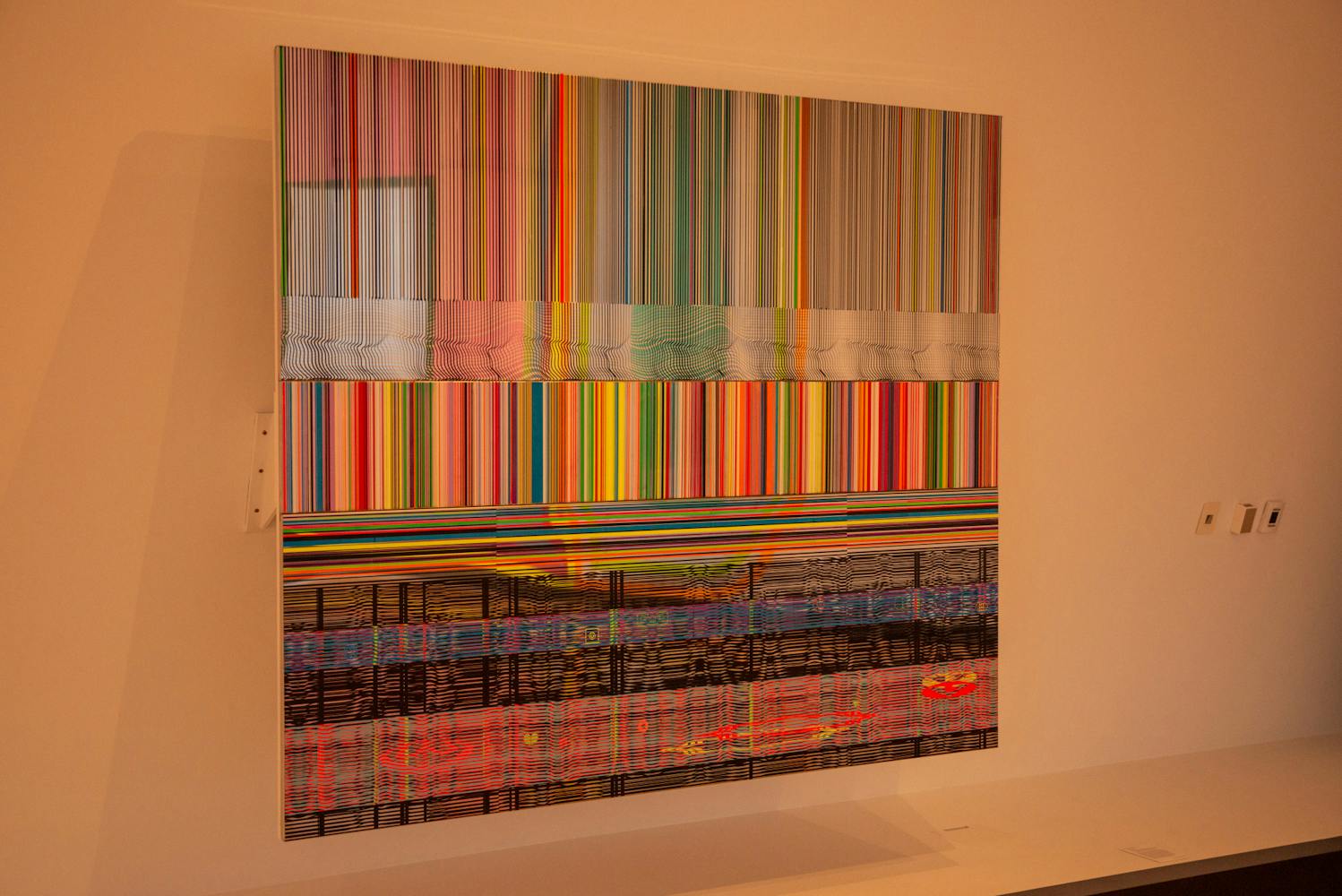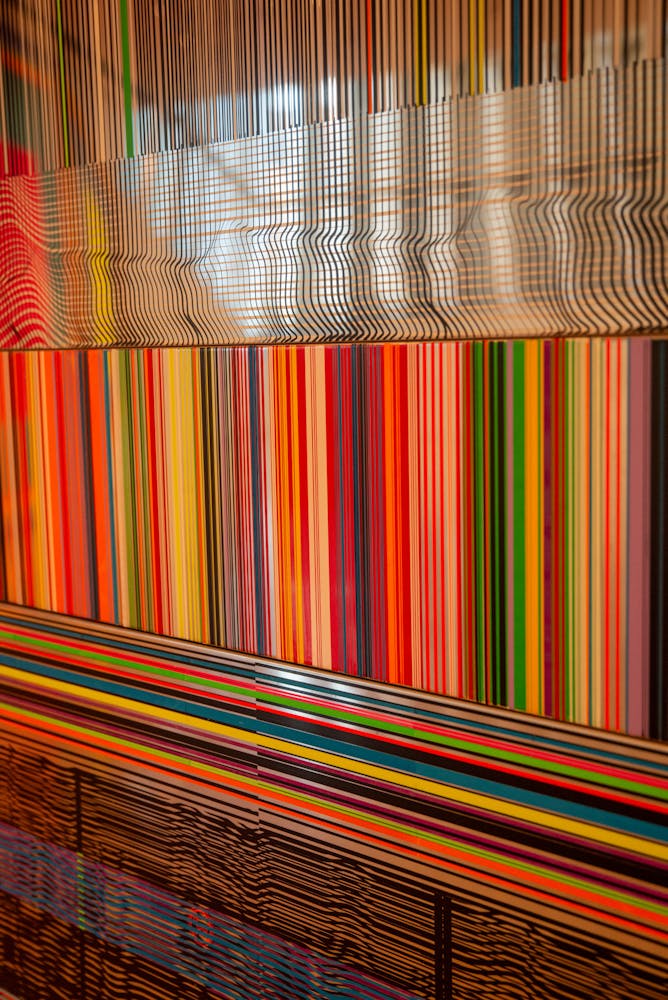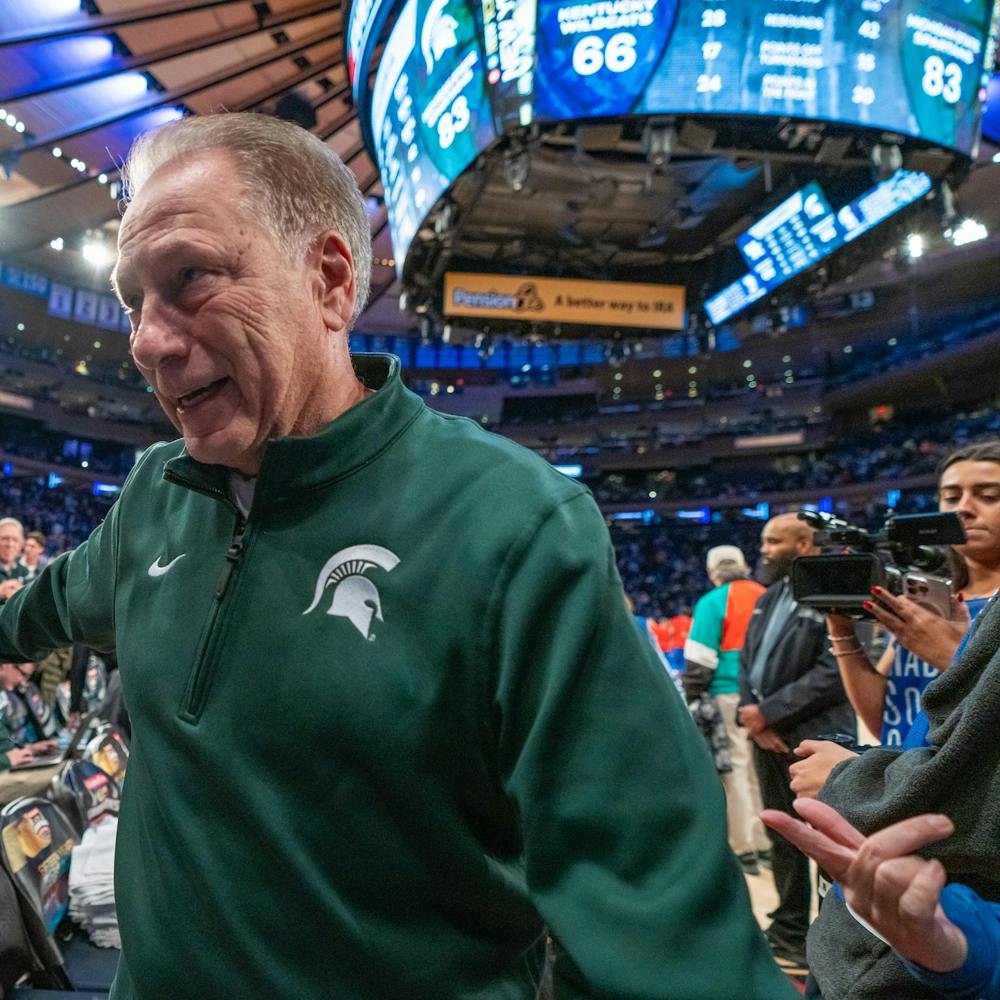On Jan. 15, the Eli and Edythe Broad Museum welcomed two new exhibitions. One exhibition is a pair of murals designed to celebrate the museum’s 10-year anniversary, and the other exhibition is a collection dedicated to the life of famous Mexican artist Frida Kahlo, with a primary focus on her health.
“Beverly Fishman: Recovery”
2022 marks the 10th year that the Broad has been open, and to celebrate the anniversary, the museum decided to specially commission artwork. They selected Detroit-based artist Beverly Fishman to create two murals which will be in the museum's permanent collection.
Steven Bridges, senior curator and director of curatorial affairs at the Broad, said they selected Fishman because they felt geometric and abstract aspects of her art style communicated well with Broad’s architecture.
“(Fishman) was really up to the task to engage in this major commission for one of our most iconic galleries at the museum, responding to that space in a meaningful way while also developing and inserting her own visual language into that,” Bridges said. “That conversation with (Fishman) obviously progressed in a very fruitful and meaningful way.”
The murals that Fishman created are approximately 14 by 35 feet long, and they expand across opposite walls in one of the Broad’s rooms. Each mural's brightly colored shapes and lines are specially designed to fit the space they have been designated on each wall. There are also two additional Fishman pieces on the room’s other two walls, which were already a part of the museum’s permanent collection.
Bridges said that every aspect of the design was intentional. The colors respond to the gallery’s changing light, and the angles created in the art create a push and pull dynamic with the building itself, which has no right angles in its foundation with the exception of right angles in the door frames.
Like the art itself, which works in response to the building’s design, the conceptual framework for the pieces relates to humans responding to the world around us: a world consumed by a pandemic, a climate crisis and social inequality.
The murals, entitled “Recovery I” and “Recovery II,” respond to the world’s darkness by creating moments of solace. The murals, and even the room’s open floor plan and singular bench, invite the viewer to find that solace in the artworks, allowing healing.
“We really want to invite people to come and spend time in there and to sit and linger and really just bathe in the light and the colors of the murals and hopefully find a moment of solace from all the different things that we're dealing with on a daily basis," Bridges said. "The museum can be this place to kind of offer a little bit of sanctuary for individuals to bathe in these beautiful murals.”
“Kahlo Without Borders”
Broad’s other new exhibition is a collection of items and art that tell the story of Kahlo’s life, focusing on her time in the hospital, especially towards the end of her life.
Most of the items in the exhibition were provided by Cristina Kahlo, Frida Kahlo’s grandniece, who spent several years trying to access Frida’s medical files. Around the time that she received access to them, Cristina met Broad Museum Executive Director Mónica Ramírez-Montagut, and they decided to create the exhibition at the Broad.
The exhibition begins with many photos of Kahlo with her family and friends, with her husband—famous Mexican artist Diego Rivera—and with other notable people like Leon Trotsky. There are also several letters written to and by Kahlo.
At about one-third of the way through the exhibition, the collection changes to being medical-related, just as Frida’s life became dominated by hospital stays and doctor visits due to miscarriages and her chronic pain, which was a result of her contracting polio at a young age and being severely injured in a bus accident as a teenager.
These medical-related items include letters with her doctor, letters about her health, photos of Frida in the hospital and medical scans. There are also five original drawings by Frida, which she created from her hospital bed, and there is Cristina Kahlo’s contemporary interpretation of Frida’s hospital gown, which she used as a place to wipe her paintbrushes.
Ramírez-Montagut noted that the exhibition comes at a time, two years into the pandemic, that people have been dependent on and under-appreciative of medical personnel. She hopes that seeing Kahlo’s grateful and endearing views of her doctors can provide a much-needed perspective in 2022.
“A lot of the exhibition shows Frida showing immense gratitude, not only to her doctors, but also to the nurses and to the support system that took care of her when she needed them, so we felt that that's an important message to revisit today and to emphasize it,” Ramirez-Montagut said.
The museum also hopes to represent people with disabilities and chronic illnesses in a new light.
“We hope to challenge an ableism narrative as well,” Ramirez-Montagut said. “We want to make sure that we all understand that folks with different disabilities, with different chronic health care issues, are equal contributors to the history of art, to the most important contribution in our world. That's a story that we don't tend to tell, and we want to make sure that gets conveyed. Frida, from her hospital bed, was able to shape the history of art of the 20th century to make incredible contributions.”
Support student media!
Please consider donating to The State News and help fund the future of journalism.
The exhibition aims to look behind Frida’s fame and see her compassion and resilience through her vulnerability and support system. Ramírez-Montagut said she hopes that this vulnerability resonates with museum visitors who can see themselves in the exhibition and in Frida.
“The exhibition is somewhat somber in its tone, but precisely because we want folks to be able to see themselves in Frida’s journey, and ultimately, what I think also is important to see in this show, is the great power of self expression and art,” Ramirez-Montagut said. “That's also something that we want to make sure gets conveyed today while we're still going through this global pandemic: self expression, as a tool and vehicle for healing and for building community is very much what Frida’s work was all about. ... We want to share these with the public that may also find in the arts, a way to find solace and comfort during these difficult times.”
Discussion
Share and discuss “Broad Art Museum celebrates Frida Kahlo and Beverly Fishman, opens 2 new exhibits” on social media.
